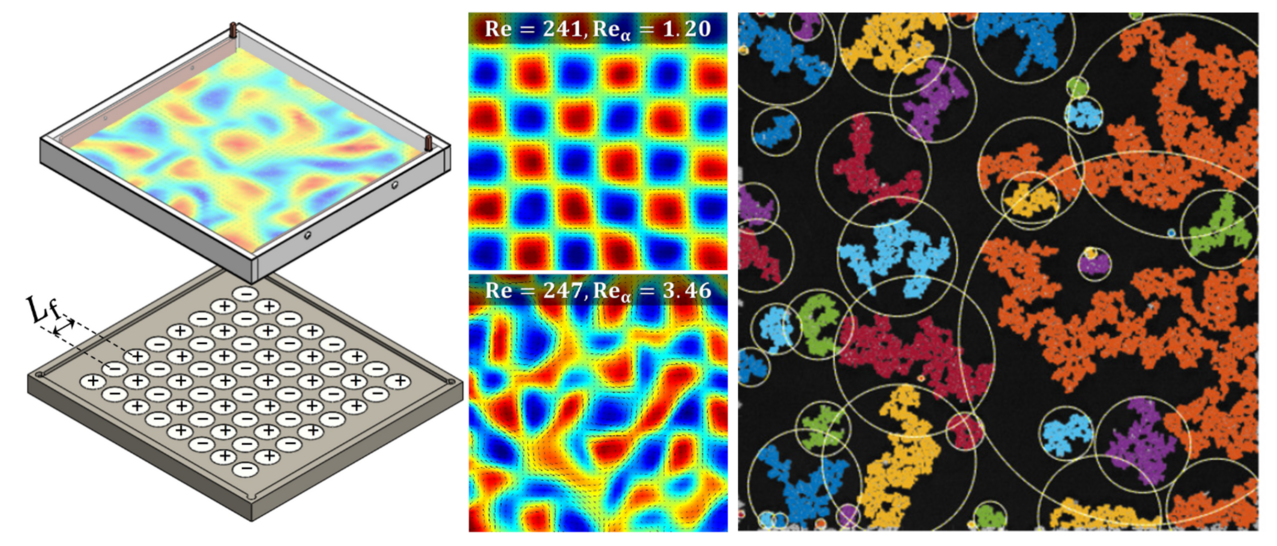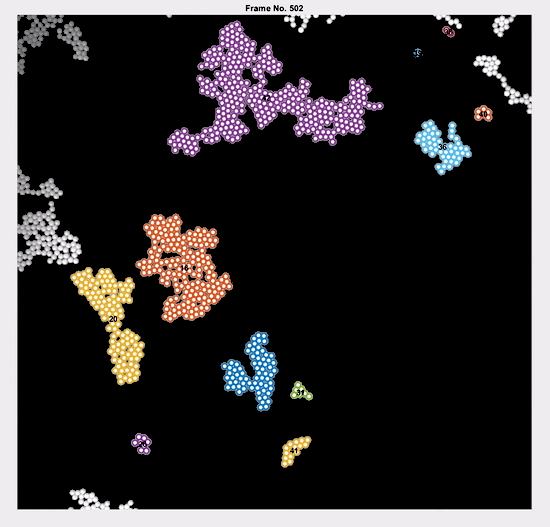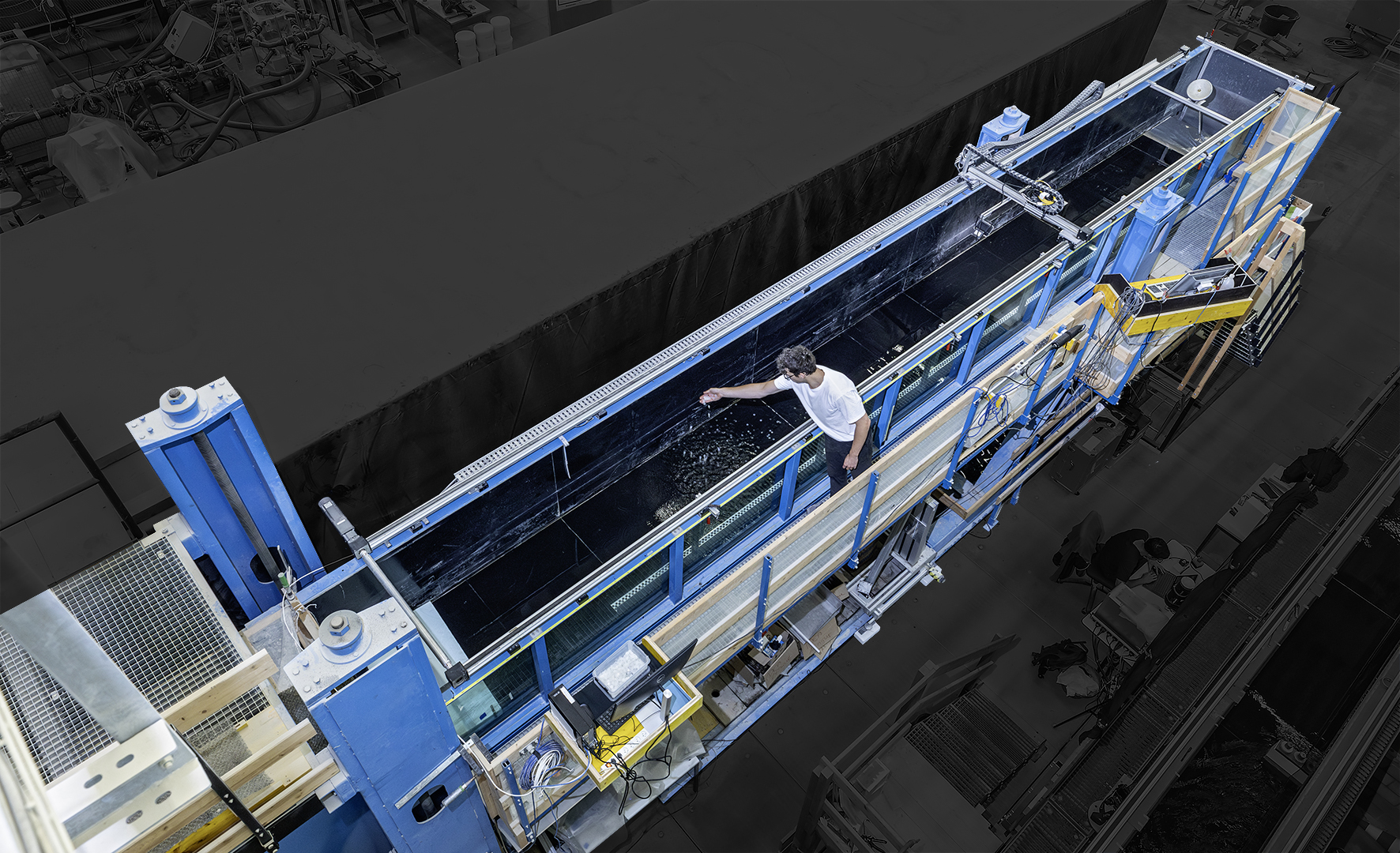Free-surface flows
Observing clustering and dynamics of particles and tracers in free-surface flows.
2D particle suspensions
Dense particle suspensions in turbulent environments are common in both industrial and geophysical contexts. Understanding their dynamics holds significant importance for various applications, such as sediment transport in rivers, mixing processes in chemical engineering, and particulate flows in natural and industrial landscapes. However, previous research has predominantly focused on dense suspensions within laminar flows or the dynamics of dilute particle-laden turbulence. It can be partly ascribed to the experimental challenges of visualising and tracking a large number of particles within turbulent systems.
The research features non-Brownian, millimeter-sized spheres transported by an electromagnetically driven quasi-two-dimensional (Q2D) flow. This setup enables meticulous particle tracking up to very high fractions (almost jamming) in fully developed turbulence. The work concentrates on identifying the criteria for the emergence and development of turbulence in Q2D geometry and studying the behavior of finite-size particles in such flows under various conditions.

Selected publication
Surface droplets
Oil droplets floating on the free surface are ubiquitous in various natural and industrial applications, especially in the case of oil spills which may lead to serious economic loss and environmental disasters. When the flow below the free surface is turbulent, the problem becomes more complex as the droplet geometry and interface could experience strong deformation. In this project, we aim to investigate the dynamics of oil droplets on free surface turbulence, including the deformation, fragmentation, dispersion and coalescence.
Free-surface turbulence

Free-surface turbulence has received increasing attention in the past decades due to its ubiquitousness and huge relevance for various engineering and scientific applications, ranging from ship design to oceanography to chemical processing. Free-surface turbulence refers to the chaotic motion of fluid at the interface between two liquids, typically air and water. It can be characterised by the presence of eddies, surface roughness or waves, and fluctuations in velocity and pressure.
Our research focuses on utilising particle image-based experimental techniques to characterise the physical properties of free-surface flow with turbulence underneath. In particular, high-resolution Lagrangian and Eulerian statistics of turbulence are achieved by tracking high numbers of tracer particles floating on the free surface over extended periods of time.
Transportation of floating particles in turbulent streaming waters
The effects of shape and size on the transport of floating particles in turbulent streaming waters is investigated. This work is highly relevant to the motion of floating meso-plastics and micro-plastics in riverine environments. Significant work has been made characterising negatively and neutrally buoyant inertial particles in idealised three-dimensional turbulence, however, the behaviour positively buoyant particles in free surface flows has only recently gained interest. Additionally, meso-plastics in the environment are not idealised spherical objects but vary in shape and size. State of the art imaging techniques is used, namely particle image velocimetry (PIV) and particle tracking velocimetry (PTV) to study these free surface turbulent flows and the transport of particles on it. The research aims to achieve a better understanding of how floating particles are transported by streaming waters which is crucial for predicting the transport of plastic pollution.
